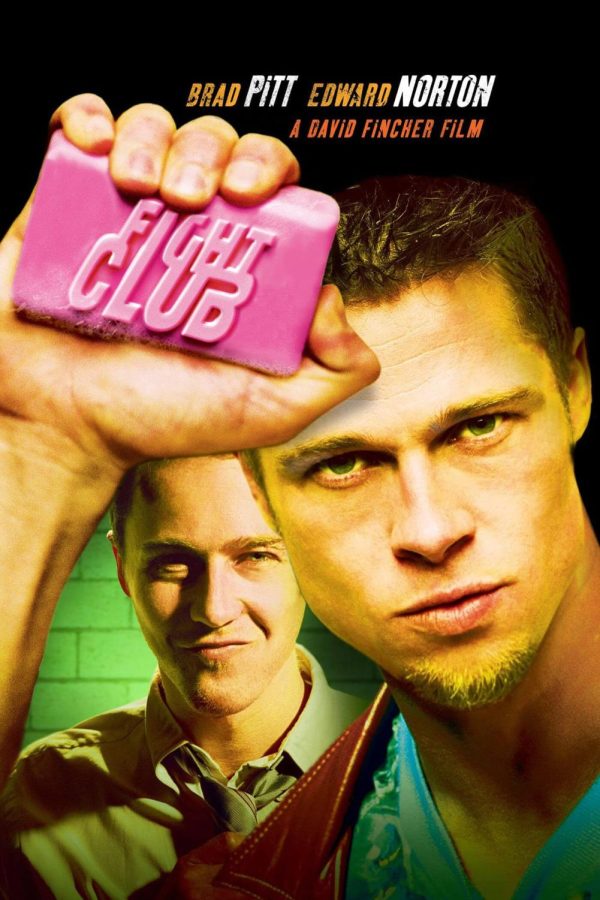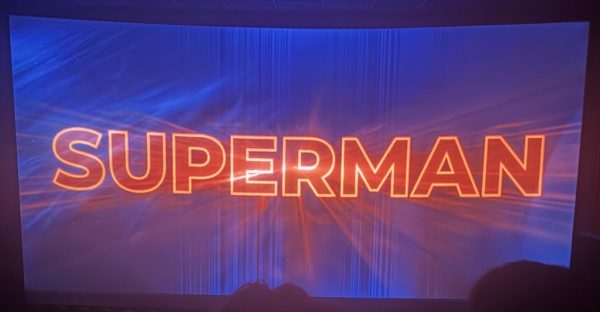GUEST: ‘Fight Club’: a provocative, compelling critique of masculinity and consumer culture
Our Guest film reviews are a collaboration with Billy Kaskay’s Ethics and Culture in Film elective.
Are you tired of feeling powerless and numb in a world that seems to be moving faster and faster without you? Then step into the chaotic and exhilarating world of “Fight Club,” where the rules are few and the punches are plenty. “Fight Club” is a 1999 film directed by David Fincher, starring Brad Pitt and Edward Norton, which features a runtime of two hours and 19 minutes. “Fight Club” is an action packed thriller which features dramatic undertones of mental illness and crime. The purpose of the movie “Fight Club” is to explore the idea of masculinity and the ways in which modern society emasculates men, leading them to search for meaning and power through violent and extreme means.
The opening of “Fight Club” begins with the narrator, who is a nameless and unhappy office worker, describing his life of emptiness and dissatisfaction. He is plagued by insomnia and a feeling of disconnection from the world around him and seeks relief through various forms of self-destructive behavior. As time goes on he becomes involved in an underground fighting club called Fight Club. As he becomes more and more entrenched in the world of fighting, he begins to develop a strong bond with the club’s enigmatic leader, Tyler Durden. Together, they form a plan to challenge and upend the consumer culture that has left them feeling empty and unfulfilled. However, their actions have unforeseen consequences, and the narrator is forced to confront the true nature of his relationship with Tyler and the destructive path they have set in motion.
The major characters found in “Fight Club” are the narrator who is the main protagonist of the film who struggles with insomnia. Tyler Durden is another major character who is a charismatic figure who befriends the narrator and eventually partners up with the narrator to form Fight Club. Tyler is ultimately the one who has the strong desire to challenge consumer culture which he views as emasculating and dehumanizing, and ultimately inspires the narrator to indulge in his self-destructive tendencies. Marla Singer is a woman who the narrator meets at a support group for people with terminal illnesses. She becomes a romantic interest for both the narrator and Tyler, and her presence serves as a catalyst for the conflicts and events that unfold throughout the story. The final major character is Robert Paulson, who is a member of Fight Club who becomes a close friend and ally of the narrator, finding him at a testicular cancer support group. He is a large, imposing man with a tragic past, and his loyalty and bravery are instrumental in the success of Fight Club.
“Fight Club” uses a variety of cinematic elements to enhance its thought-provoking narrative. The movie is known for its stunning cinematography, which uses a range of techniques to create a visual style that is both unique and powerful. These techniques include the use of color, lighting and camera angles to create a distinct atmosphere and add layers of meaning to the film. One prominent technique is the use of desaturated colors, which give the movie a muted and subdued look that reflects the emotional states of the characters. The movie also makes use of high contrast lighting, which helps to create a sense of tension and unease. Additionally, the cinematography uses color grading and color correction to create a distorted and surreal visual aesthetic, further emphasizing the psychological themes of the movie. The director’s attention to detail makes the movie shine, even featuring a small inside joke during the film’s closing about Tyler’s previous job as a projectionist.
One of the strengths of “Fight Club” is its powerful and thought-provoking commentary on masculinity and consumer culture. The movie offers a compelling critique of the ways in which modern society emasculates men and leaves them feeling lost and disconnected. One of the weaknesses of “Fight Club” is that it can be violent and disturbing, which may not appeal to all audiences. The movie’s themes and ideas can also be challenging and complex, which may require the viewer to pay close attention and engage with the material on a deeper level. The writing in the movie is able to create compelling and relatable characters who are struggling with the challenges of modern life, and the audience is able to connect with them and empathize with their struggles. All in all, the writing in “Fight Club” is effective in creating a thought-provoking and engaging story that challenges the viewer to think about important social and cultural issues.
Overall, my response to the movie “Fight Club” is very positive. I found the movie to be thought-provoking and engaging, with a strong visual style and a captivating narrative. The movie’s commentary on masculinity and consumer culture was particularly interesting and relevant, and I appreciated the ways in which it challenged me to think about these issues in new ways. While the movie can be violent and disturbing at times, I felt that these elements added to the impact and intensity of the story. I would recommend “Fight Club” to others who are interested in challenging and thought-provoking cinema. ★★★★★











